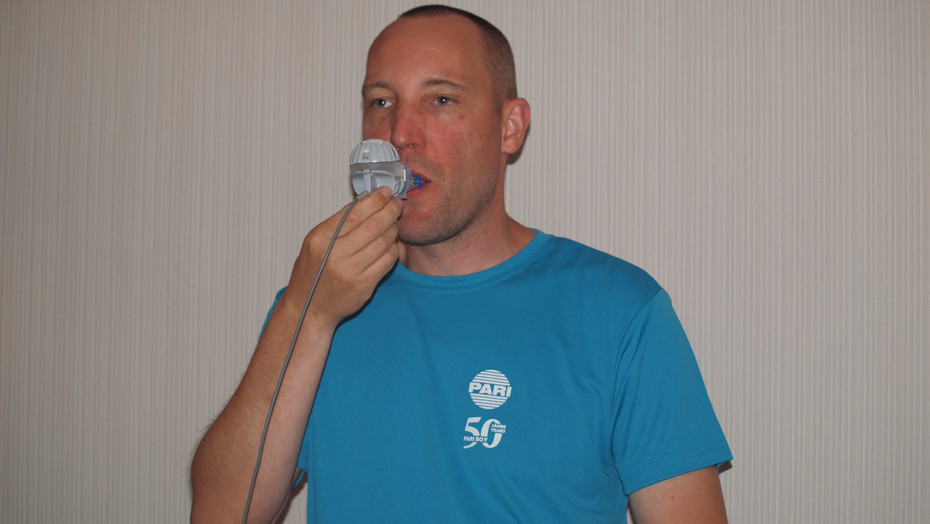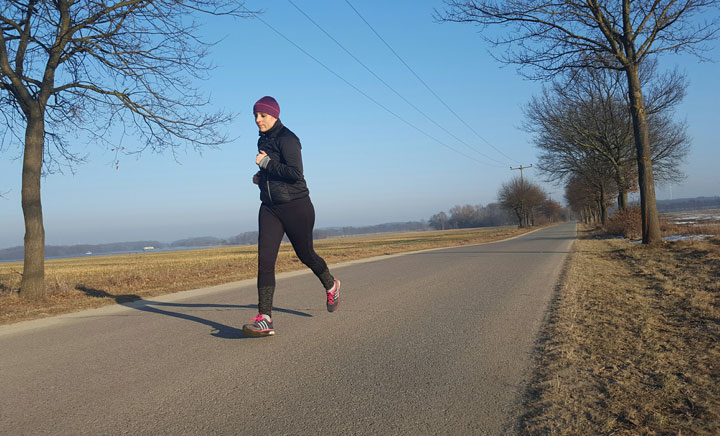People with chronic lung diseases, like cystic fibrosis (CF) and primary ciliary disease (PCD), must use a nebuliser device every day. This requires discipline and is not something that comes easily for everyone. The PARI blog spoke with people who have these diseases, clinicians about treatment compliance, and about what it is that motivates these patients to do their daily nebuliser therapy.
‘As a doctor with more than 20 years professional experience, I know the challenges that complicated, long-term therapies present for patients with chronic diseases. Even I sometimes find it difficult to take just one pill a day regularly’, says Dr Cordula Koerner-Rettberg. Dr Koerner-Rettberg is a paediatric pneumologist specialised in CF and PCD and has many patients with lung diseases whose long-term therapy requires regular nebuliser therapy using a range of medications several times a day.
One person who has had to use a nebuliser at least twice a day for over 36 years is Markus Hänni. The author of two autobiographies has cystic fibrosis (CF) [link to PARI cystic fibrosis page]. He was diagnosed with the genetic disorder at the age of 2. Since then he has done nebuliser therapy for an hour, sometimes more, twice a day. He calculates that he has done nebuliser and respiratory therapy for more than 26,500 hours so far. ‘Obviously, the therapy isn’t fun but I still do it without fail. I never skip a therapy. I’ve been like that since I was a child. I am used to the daily nebuliser and respiratory therapy. Both are a part of my day’, explains Hänni.
For Sven Weiboldt, it was rather different. After a long ordeal, he was first diagnosed with primary ciliary dyskinesia (PCD) [link to PARI PCD page] when he was an adult. The disease altered his life in the most extreme way. One lung lobe had to be removed, and his ability to do things was sometimes very limited. ‘There were times when my wife had to carry the shopping bags because my lungs and my level of fitness made it impossible for me to do it. That gets to you’, says Weiboldt. Getting a diagnosis and treatment gave him hope that he could do something about his suffering.

The now 43-year-old with PCD recalls, ‘The first few years after the diagnosis, I was extremely careful and precise regarding nebuliser therapy and therapy. Everything revolved around the disease and doing the nebuliser therapy. It didn’t matter where I was at the exact time I was supposed to perform nebuliser therapy, I used the saline and antibiotic to maintain the exact recommended interval between treatments. I also meticulously performed hand hygiene, which is necessary when disinfecting the nebuliser head. I disinfected my hands so many times a day that I developed eczema. Losing myself in the therapy like this was a burden for me and my wife. Now I am more relaxed about it. I continue to perform my nebuliser therapy regularly, but no longer with this excessive precision, which limited what I could do. Being somewhat relaxed about it is much better for your psyche’. Christine Braune experienced something similar. She also learned she had primary ciliary dyskinesia (PCD) in her mid-30s. From one day to the next she had to get used to doing regular nebuliser therapy. She says, ‘In the beginning, the dominant emotion was euphoria. I did everything I could: nasal irrigation, nasal therapy with the PARI Sinus, nebuliser therapy for the lungs with the eFlow. But at some point, it became more and more difficult for me to navigate my new routine.’

The 35-year-old admits, ‘After 6 months the euphoria was gone, and I got kind of lazy. I felt good, since starting the treatments I had had almost no infections. I was less motivated to make this huge effort twice a day: nasal irrigation, boiling water then letting it cool; nasal nebuliser therapy, nebuliser therapy for my lungs, disinfect the nebuliser head – at some point I just got sick of all these steps. ’In her work as a pneumologist, Dr Cordula Koerner-Rettberg also encounters waning motivation and a lack of compliance with the therapy. She recalls a particularly drastic case, ‘Recently, a young adult patient, who despite having cystic fibrosis and having the responsibilities of a full-time job and being in a new relationship, revealed to me that she had not done her nebuliser therapy for more than 6 months. I was astonished because up until this point the patient had been very conscientious and concerned about her health. When I asked why she was doing this, she said she just couldn’t bear it any more that her apartment looked like a sick bay: The nebuliser was in full view, the nebuliser heads and other nebuliser accessories were laid out to dry after being disinfected. She said she did not want to see these symbols of her disease any more in her apartment. It went against her attitude towards life of being normal and healthy, so she said she removed these visible signs of the disease and of time stolen from her by doing the therapy’.
These examples show that it is not all about pulmonary function values and lifespan, but also, primarily, about quality of life and taking part in a normal routine. Therapy and life need to work together, so patients perceive the therapy as helpful, not as a burden. Concluding from this, Koerner-Rettberg states, ‘Therefore, we, as doctors, therapists, and also developers of medical devices and medications, have to give our best to improve not only long-term health outcomes, but also to consider a patient’s quality of life over their lifetime’. It seems she is right to think like this.
Because there is reason to assume that patients are more willing to do the treatments when the therapeutic measures can be included in the daily routine easily. For example, Christine Braune admits, ‘I do my lung nebuliser therapy more regularly because I can use the eFlow for this. Nebuliser therapy using the eFlow is easier to add into my day than using the PARI Sinus for nasal nebuliser therapy (or than doing this with other nebuliser devices). It goes quickly, it is quiet and the device is easy to hold. I can read the morning paper whilst doing my therapy’.
Markus Hänni feels much the same. He says, ‘I really like the eFlow because it’s very small and lightweight. That’s why I always have it out on the table within easy reach. The eFlow is much quicker, is quieter and therefore discreet, or you can listen to music or watch videos while doing the therapy without having to turn up the volume’. Sven Weiboldt says, ‘If I didn’t have the nebulisers and the medications, my health would not be stable, in fact it would deteriorate further. I have found that you can see and feel in your lungs how fine the mist is that PARI nebuliser devices produce. I know that it is helping to use these nebulisers for therapy. I can feel how well nebuliser therapy with the saline solution MucoClear 6% loosens the mucus. When I notice that I am feeling better, this motivates me. If a nebuliser therapy is effective this justifies it for me and is worth me giving up time for it’.

The reasons Christine Braune does her regular treatments are similar. She explains, ‘The biggest motivation for me to do my nebuliser therapy regularly is that I get through the day better. I can cough up mucus better, so I can breathe more easily during the day and have to cough less. I can do more and do it better’. For Markus Hänni there is also another element. He says, ‘I often struggle with my cystic fibrosis, but I want to live as long as possible, and so I do my nebuliser therapy without fail every day. I try to give it my best. I do this because I have two children, and I want to be around as their father for as long as possible, want to set a good example for them, and convey a certain attitude towards life by what I do, i.e. to always give my best and that includes my therapy’.
Note: The statements made in the report are the individual view of the persons reporting. They do not necessarily reflect the PARI view or the general state of science.
An article written by the PARI BLOG editorial team.
© 2025 PARI GmbH Spezialisten für effektive Inhalation